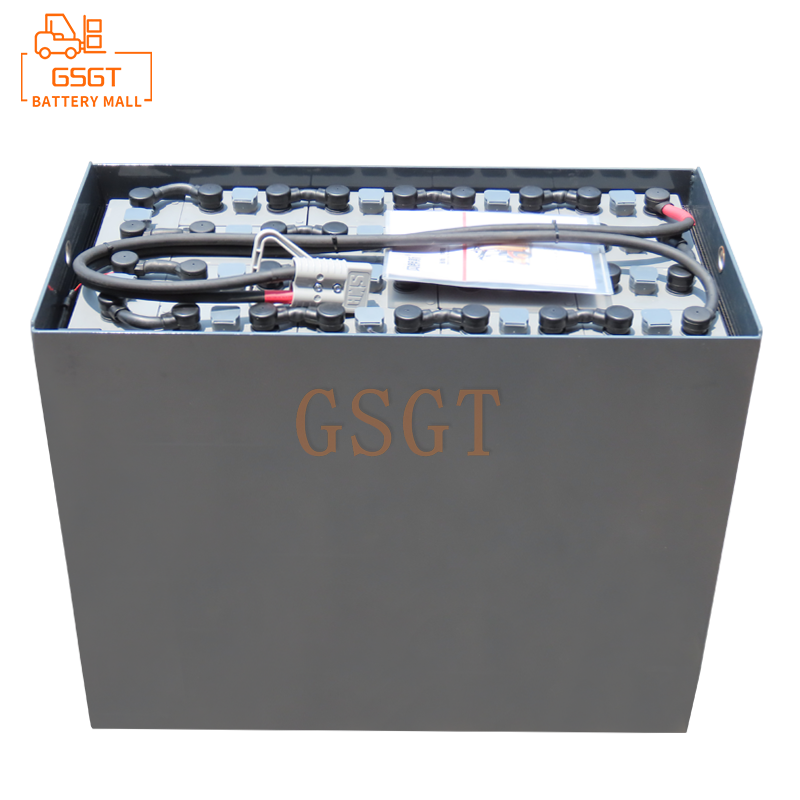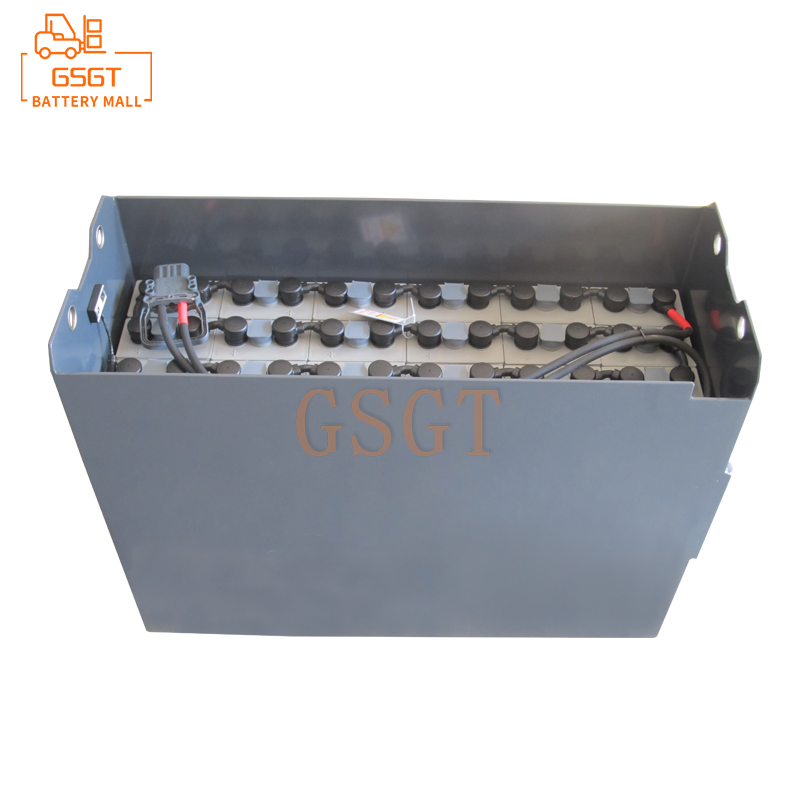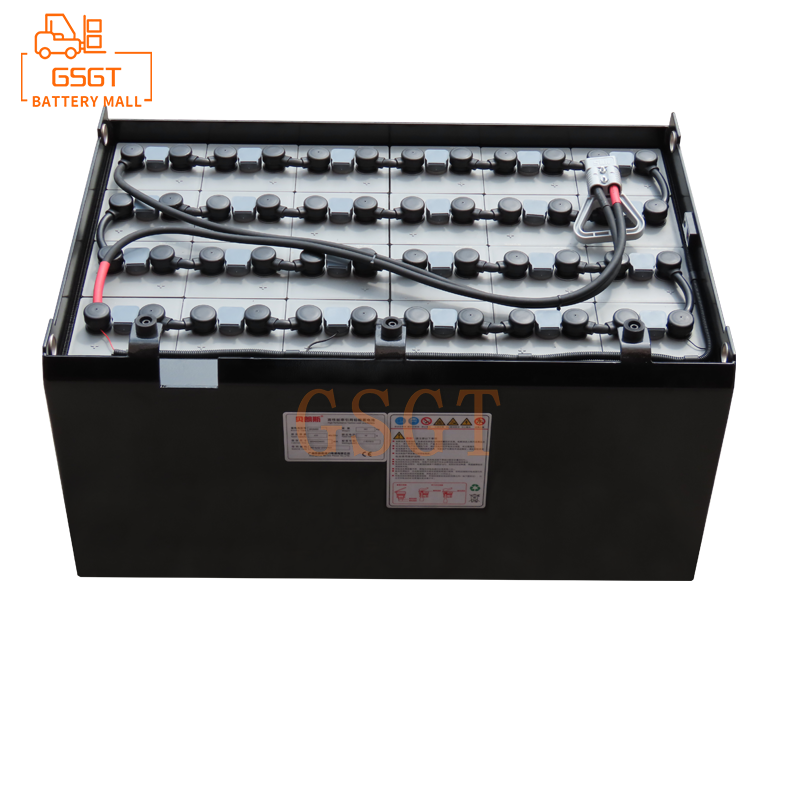Time:2025-04-01 10:20:35
Browse:659
In the field of logistics warehousing and industrial production, forklift as an important handling equipment, its power core - the stable operation of lead-acid battery is very important. Once the battery fails, timely and effective maintenance can extend its service life and reduce operating costs. This article will introduce in detail the necessary tools and key skills for the maintenance of forklift lead-acid batteries to help maintenance personnel solve problems efficiently.
Inventory of essential tools
●Professional testing instrument
1. ** Multimeter ** : Multimeter is a "generalist" for detecting the basic parameters of lead-acid batteries. Through it, the voltage of the battery can be accurately measured and the charging state of the battery can be judged. In general, a fully powered 12V lead-acid battery, the no-load voltage should be between 12.6-12.8V, if the voltage is lower than 12.4V, it indicates that the battery may be in a state of loss of power. At the same time, the multimeter can also measure the internal resistance of the battery, under normal circumstances, the internal resistance of the forklift lead-acid battery is at the milliohm level, and the internal resistance is too large often means that there are problems such as plate vulcanization and electrolyte drying inside the battery.
2. ** Hydrometer ** : The hydrometer is used to measure the density of lead-acid battery electrolyte, which is a key indicator to assess the health of the battery. The electrolyte density is closely related to the degree of battery charging, and the electrolyte density of a fully charged lead-acid battery is usually about 1.28-1.30 g/cm³ (25 ° C). When the density is less than 1.20g/cm³, the battery may have undercharge or electrolyte loss. The hydrometer is divided into ordinary glass tube type and digital type, the digital hydrometer is more convenient to operate, the reading accuracy is higher, and it is widely used in practical maintenance.
3. ** Battery detector ** : The professional battery detector is more powerful, and can carry out comprehensive performance testing of lead-acid batteries. It can not only measure the voltage, internal resistance, capacity and other parameters of the battery quickly and accurately, but also simulate the actual working state of the battery and predict the remaining service life of the battery. Some high-end battery detectors also have data analysis function, through the comparative analysis of multiple detection data, to help maintenance personnel more accurately determine the cause of battery failure, develop targeted maintenance programs.
●Service tool
1. ** Wrench and Screwdriver set ** : When removing and installing lead-acid batteries, a complete set of wrenches and screwdrivers is necessary. The fastening methods of batteries and connection components vary with forklift models. Wrench and screwdriver sizes are required for different forklifts. For example, the common 10mm and 12mm wrenches are used to remove the nuts on the battery pole, and the Phillips and flat-head screwdrivers are used to open the fixing screws on the battery housing.
2. ** Electrolyte Filling tool ** : When the electrolyte level of the lead-acid battery is too low, it is necessary to add distilled water or special electrolyte. This is where the electrolyte filling tool comes in handy. Common filling tools are plastic funnels and special electrolyte syringes. When using a plastic funnel, ensure that the funnel mouth is closely fitted with the battery injection hole to prevent electrolyte overflow; The electrolyte syringe can precisely control the filling amount, which is suitable for maintenance scenarios that require high electrolyte addition amount.
3. ** Cleaning tools ** : During maintenance, it is essential to keep the battery surface and interior clean. The brush can be used to clean the dust and dirt on the surface of the battery housing and the oxide on the pole to prevent these impurities from affecting the electrical conductivity of the battery. For the sediment and impurities inside the battery, a straw can be used to clean up to ensure the purity of the electrolyte and avoid the corrosion of impurities on the plate.
Deep analysis of key maintenance skills
● electrolyte related issues
1. Treatment of low liquid level ** : Regularly checking the liquid level of the lead-acid battery is an important part of daily maintenance. When the liquid level is found to be lower than the lowest scale line, the distilled water should be added in time. This is because in the battery charging and discharging process, the water will gradually evaporate, and the content of sulfuric acid is basically unchanged, if the sulfuric acid solution is added, it will lead to the electrolyte density is too high, accelerating plate corrosion. After the distilled water is added, the electrolyte density should be measured with a hydrometer to ensure that it returns to the normal range.
2. ** Abnormal electrolyte density adjustment ** : Too high or too low electrolyte density will affect battery performance. If the density is too high, it may be that the battery is overcharged or the water loss is serious, at this time, an appropriate amount of distilled water can be added for dilution, stirring while adding, and measuring with a hydrometer until the density reaches the normal range. If the density is too low, the battery may be undercharged or internal short circuit, you should first fully charge the battery, if the density still does not return to normal, you need to further check whether the battery has a short circuit fault.
3. ** Electrolyte replacement tips ** : When the lead-acid battery is used for a long time, the electrolyte is seriously polluted or aging, the electrolyte needs to be replaced. First, use a straw to draw out the old electrolyte as much as possible, and then rinse the inside of the battery with distilled water 2-3 times to remove the remaining impurities and the old electrolyte. After washing, wait for the water inside the battery to drain fully, and then add the appropriate amount of new electrolyte. The density of the new electrolyte should be selected according to the type of battery and the use environment, and the electrolyte density of the general forklift lead-acid battery is between 1.26-1.28 g/cm³.
●plate fault maintenance points
1. ** Plate vulcanization repair ** : Plate vulcanization is one of the common faults of lead-acid batteries, mainly manifested as battery capacity reduction, charging difficulties, and internal resistance increase. When it is found that the plate is vulcanized, it can be repaired by using a small current and a long time charging method. The specific operation is to charge the battery with a current that is less than 1/10-1/20 of the normal charging current, and the charging time lasts 10-20 hours. During the charging process, a small number of bubbles can be observed inside the battery, which is a normal phenomenon. After charging, the hydrometer is used to measure the electrolyte density. If the density returns to normal and the battery capacity is increased, it indicates that the plate vulcanization problem has been repaired to a certain extent. For the more serious vulcanization plate, chemical repair method can also be used, that is, to add an appropriate amount of sulfide scavengers to the electrolyte, such as sodium sulfate, potassium sulfate, etc., these scavengers can chemically react with the sulfide on the plate, dissolve it, and restore the activity of the plate.
2. ** Plate short circuit investigation and treatment ** : plate short circuit will cause the battery voltage to drop rapidly and cannot work normally. When checking the plate short circuit, observe the battery appearance first. If the battery shell is deformed, bulging, or electrolyte leakage, the internal pressure may be caused by the plate short circuit. Then, use a multimeter to measure the resistance between the positive and negative electrodes of the battery, if the resistance value approaches zero, it indicates that there is a short circuit fault on the plate. The cause of plate short circuit may be the damage of the diaphragm between the plates, the active material falling off and accumulation leading to positive and negative plate connectivity. For short circuit caused by partition damage, a new partition should be replaced; For the short circuit caused by the active material falling off and accumulating, the electrolyte in the battery can be poured out, the plate can be washed with distilled water, the active material can be removed, and then the new electrolyte can be installed and added.
3. ** Plate corrosion response strategy ** : Plate corrosion is usually caused by too high electrolyte density, too large charging current or too high ambient temperature. When the plate corrosion phenomenon is found, first check the electrolyte density and the parameter Settings of the charging device, adjust the electrolyte density to the normal range, and reduce the charging current. For slightly corroded plates, you can gently sand them to remove the corrosion layer on the surface, and then apply a special rust inhibitor to prevent further corrosion. If the plate corrosion is serious, resulting in significantly thinner plate thickness and a large number of active substances falling off, a new plate needs to be replaced.
●Charging system troubleshooting
1. ** Charger failure detection ** : Charger failure is one of the common reasons that lead to normal charging of lead-acid batteries. When testing the charger, use a multimeter to measure whether the output voltage and current of the charger meet the battery charging requirements. Generally speaking, the output voltage of the charger of the forklift lead-acid battery should be slightly higher than the rated voltage of the battery, such as the output voltage of the charger of the 12V lead-acid battery between 13.8-14.4V. If the output voltage and current of the charger are abnormal, you can check the circuit components inside the charger, such as whether the fuse is blown, whether the rectifier diode is damaged, and whether the capacitor is leaking. For damaged circuit components, should be replaced in time to ensure the normal operation of the charger.
2. ** Charging line check ** : The charging line is broken, short circuit or poor contact will also affect the charging effect of the battery. When checking the charging line, it is necessary to focus on whether the line is damaged, aging, broken, etc., and whether the plug and socket are firmly connected. You can use the resistance level of the multimeter to measure the resistance of the charging line. If the resistance value is too large or infinite, it indicates that the line has a break or poor contact. For the broken line, the break point should be found and repaired; For plugs and sockets with poor contact, sandpaper can be used to sand the contact surface, remove the oxide layer, and then reconnect to ensure that the charging line is smooth.
3. ** Charging parameter optimization ** : Different models of forklift lead-acid batteries, the best charging parameters are different. During the maintenance process, if the battery charging effect is found to be poor, the charging parameters of the charger can be optimized according to the specifications and use of the battery. Generally speaking, charging parameters include charging current, charging voltage and charging time. For new batteries or batteries with large capacity, the charging current can be appropriately increased to shorten the charging time; For batteries with longer use time and reduced capacity, the charging current should be reduced, and the way of long-term charging with small current should be used to avoid excessive heat of the battery and extend the service life of the battery. At the same time, it should be noted that the charging voltage of the charger should match the rated voltage of the battery, and too high or too low charging voltage will cause damage to the battery.
Maintenance of forklift lead-acid batteries requires professional tools and a series of key skills. Through the accurate use of the detection instrument, the battery fault can be quickly determined; Skilled use of maintenance tools, can efficiently complete the battery disassembly, cleaning, filling electrolyte and other operations; For common faults such as electrolyte, plate and charging system, appropriate maintenance skills can effectively repair the battery and restore its performance. Maintenance personnel in the actual work, should continue to accumulate experience, improve maintenance skills, to ensure that the forklift lead-acid battery is always in good working condition, to provide reliable guarantee for the efficient operation of the forklift.

$1105

$2140

$2040

$2180

MESSAGE
Professional And Efficient
Security
Affordable Price
Professional Services